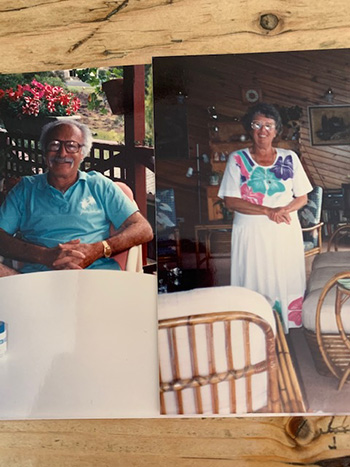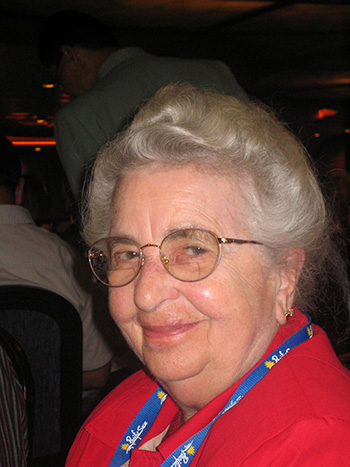Get our independent lab tests, expert reviews and honest advice.
Have the recent retirement village reforms gone far enough? NSW waits and watches

Need to know
- NSW government is yet to act on recurring fees after departure and long delays in exit entitlements
- Residents hope the government will apply the changes retroactively
- Several states have already introduced reforms to the retirement-village industry, but its controversial loan system is alive and well
On this page:
- Recent reforms to NSW retirement village industry
- Important reform to exit fees still on hold
- Retirement village case studies
- Why the delay?
- How residents lose their nest egg
- Retirement homes a 'terrible investment'
- Industry says the model is working
Could the retirement-village sector finally be coming around to giving residents a fair deal? A number of reforms have made their way through state parliaments in recent years, but it’s hardly the overhaul that many have called for.
Victoria and Queensland recently beefed up rights for village residents. But NSW reforms take particular aim at the financial arrangements that have long given village operators the upper hand.
I have not one fond memory of Aveo
Many consumers have contacted us about retirement village rip-offs over the years. Referring to Aveo, one of Australia’s biggest retirement village operators, one told us: “I have not one fond memory of Aveo and would rather set myself alight and go down a river than ever set foot in one of their villages.”
Another said: “Mum paid about $35,000 a year on top of her home purchase to live in Aveo, plus utilities and council rates. I think she and a friend could have spent their time living on a cruise ship sailing around the world in style for about the same price.”
Recent reforms to NSW retirement village industry
Earlier this year, the NSW Government established a mandatory code of conduct for village operators and, at least on paper, improved the dispute-resolution processes. (In a recent survey, more than nine in ten residents (93%) who had concerns about dispute handling said the issue was “operator responsiveness”.)
The NSW reforms also require operators to hold regular meetings with residents about what their contracts mean, focusing especially on how much they can expect to get back if they paid an interest-free loan (or “ingoing” loan) to get in and how long they’ll have to keep paying fees after they move out.
Prospective residents in NSW must now be given a breakdown of estimated ongoing costs (known as an “average resident comparison figure”, or ARCF) as well as how much of their ingoing loan they’ll lose if they leave any time after the settlement period (90 days in one contract we looked at). Generally, the answer is – a lot.
There are 653 retirement villages in NSW and about 66,000 residents, so a lot of people stand to be affected by the reforms.
Important reform to exit fees still on hold
One proposed NSW reform remains in limbo – and it goes to the heart of why becoming a resident is so often a bad financial move.
The pending reform has to do with the crucial issues of:
- ongoing fees (or “deferred management fees”) after a resident moves out
- how long it takes residents to get back the refundable portion of their ingoing loan, plus any share of capital gains (or “exit entitlement”).
These two sticking points have long left many village residents around Australia with a lot less money than they thought they’d have after moving out – often not enough to pay for aged care or another suitable place to live.
Many village residents around Australia are left with a lot less money than they thought they’d have after moving out – often not enough to pay for aged care or another suitable place to live
Victoria has addressed this issue in its reform package by requiring village operators to refund up to 85% of the estimated refundable portion of an ingoing loan before the unit is sold to help pay for aged care, in some circumstances.
In South Australia, operators have to pay for a departing resident’s aged care facility and then can recoup the money from the exit entitlement.
In a survey held during the NSW inquiry, 169 of 286 respondents (59%) said exit fees were not easy to understand. Generally, the longer you stay in a village, the higher the deferred management fees you’ll have to pay until the unit is sold. After a resident dies or moves out, it often falls to their children to deal with the confusion.
We’ve heard from more than a few.
Retirement village case studies

Sandra: “Promised the earth but … delivered nothing”
“My late parents lived in an Aveo village in Queensland, which they bought off the plan many years ago,” says Sandra. “My father died 22 years ago, and over the next 17, I watched the service decline, the residents treated as nuisances, and the costs escalate astonishingly.”
“It reached a point where there was no onsite manager, an appalling thing for a ‘retirement village’ that promised the earth but in fact delivered nothing. When I went to sell the unit the costs quoted were so outrageous that I was speechless. It cost around $50,000 to refurbish, then outrageous ‘advertising costs’, which I queried as all the advertising was done via Aveo, then an outrageous exit fee of approximately $100,000.”

Gary: ‘She received less than half of the $105,000’
Another person who contacted us, Gary, isn’t a big Aveo fan either.
“My mother bought a unit at Aveo for $135,000,” he says “Four and a half years later she had to go into a nursing home and had to pay a maintenance fee of nearly $2000 a month until the unit was sold. Ten months after she left, Aveo made an offer to purchase the unit for $105,000, which was agreed on.
Then the deductions came in as per agreements that my 92-year-old mother had signed and not checked: 33.3% to Aveo, plus another three percent in management fees, and $2000 a month for 10 months of maintenance fees. In the end, she received less than half of the $105,000 – $48,000 to be exact. Not a bad result for Aveo.”

Wendy: “No investment gains were passed on”
Wendy also had a lot of cleaning up to do after her mum’s death, she tells us.
“My late mum bought a unit 16 years ago when I was overseas. Apparently, legal advice was sought but the contract was too complicated for anyone to understand and mum was told ‘all retirement villages have the same arrangements’,” says Wendy.
Everyone at Aveo ‘Cherry Tree’ had to pay the complete unit fee of somewhere around $350,000 before moving in, plus other costs. I could have purchased a home twice the size in this area for less than $250,000 at the time. Then there were quarterly fees of around $700, plus fortnightly fees of around $200.”
Wendy says that whenever there was a residents’ meeting, it seemed it was about an increase in fees which they were told were to cover expenses such as the costs of expansion and developing new units.
“When mum died after nine years at Cherry Tree, I was told Aveo was owed $10,000 for every year she lived there, the unit had to be sold by Aveo, and they wanted $30,000 to refurbish it. Aveo valued the unit at $400,000. I had to pay the selling agent fee and for advertising, and the quarterly and fortnightly fees had to be paid until the unit was sold. No investment gains were passed on.
After the unit was sold and costs of around $100,000 were deducted, we inherited less than $300,000. While house prices in Melbourne soared, Aveo made huge profits, but the value of her property to us was worth $50,000 less than she paid for it nine years earlier.”
There are many more stories of retirement-village woe out there. From March to June 2016, Victoria’s inquiry into the sector received 766 submissions, many from retirement village residents who said, in effect, that they’d been robbed blind
Why the delay?
The proposed NSW reforms still in limbo are:
- a 42-day limit on fees and charges after a resident moves out
- operators to pay exit entitlements no later than six months after the moving-out date in the Sydney metropolitan area and no later than 12 months everywhere else
- operator to buy back the property if they can’t sell it within the timeframes.
A report by Kathryn Greiner, chair of the Ministerial Advisory Committee on Ageing, recommended time limits on fees and reimbursements. The report came out in June 2018 following an inquiry that Greiner led at the behest of the NSW Government.
Greiner is now the retirement village ambassador for NSW and has gone on record to say “there have been many problems in the retirement village sector over many years”.
(There are many different types of retirement village contract around the country. The proposed NSW reform would mainly benefit “registered interest holders”, who currently have to keep paying general services fees for the village until their unit is sold. They don’t get any so-called exit entitlements until the sale.)
Current residents may miss out

The proposed reforms will be a real game-changer, says Jim Gibbons, president of the Retirement Village Residents Association (RVRA), a nonprofit NSW organisation that acts in the interests of residents. He’s also a retirement-village resident himself.
“When I leave, I have to continue giving the operator the interest-free loan until they get around to selling the unit, so there’s no incentive for the operator to sell,” Gibbons says, adding that the process can take years.
Even with a proposed solution on the table, he tells CHOICE, the state government is dragging its feet on this last critical change.
There’s a strong suggestion that any changes on exit entitlements will not apply to existing residents – the very people who pushed for these reforms
Jim Gibbons, President of the Retirement Village Residents Association
“It’s intensely frustrating that we had a clear election promise that they would bring this in,” he says. “And now there’s a strong suggestion that any changes on exit entitlements will not apply to existing residents – the very people who pushed for these reforms. There was no mention of ‘grandfathering’ during the consultation phase.” (If the reforms are grandfathered, only new residents will benefit from them.)
Almost nine in ten residents (about 87%) in NSW are on registered interest-holder contracts.
The election promise came from then Minister for Innovation and Better Regulation Matt Kean in the lead-up to the election of state premier Gladys Berejiklian in 2019.
There is currently no incentive for villages to resell the units after they are vacated
Matt Kean, former NSW Minister for Innovation and Better Regulation
Kean has gone on record in support of the proposal, saying “many retirees use their life savings to buy units in retirement villages and need to access that money as they move into aged care or other arrangements. However, with residents forced to continue paying fees, there is currently no incentive for villages to resell the units after they are vacated. Some retirement villages would take advantage of retirees by forcing them to pay thousands of dollars in fees and charges until their unit was sold”.
Kean moved on to the Energy and Environment portfolio in February 2019 and was replaced by Kevin Anderson, a Nationals member from Tamworth, NSW.

Minister still considering feedback
We asked Anderson whether he supports the implementation of a 42-day time limit on recurring fees and the six-month and 12-month deadlines for the payment of exit entitlements. A spokesperson told us that the commitments were still in place at the time of the interview.
However, the spokesperson added that the minister was still considering feedback on a discussion paper that will “help shape the reforms and how they’re implemented, and ensure that they reflect the needs of residents and village operators. NSW Fair Trading will be conducting targeted consultation with stakeholders to better understand concerns raised in a number of submissions. A report on outcomes of the consultation and recommendations as to next steps is intended to be provided to the minister later this year. The government will then determine the process and timing to implement these reforms”.
We have to give full consideration to how it can possibly work. The last thing we want to do is end up with no retirement villages
Spokesperson for NSW Minister for Innovation and Better Regulation Kevin Anderson
NSW Fair Trading released the discussion paper and asked for submissions in July this year.
In April, Anderson committed to one of the specific proposals, saying “we will be moving to introduce a 42-day limit on the length of time villages can charge for general services after the departure of a resident, and mandatory sale or buyback periods for owners who want to sell their property and leave a retirement village”.
But Jim Gibbons says it’s taking too long to work out the details: “If we get into November for the next working party, I’d be amazed if we see any changes before March next year, since the lawmakers will soon go waltzing off for the holidays. The major thing we’re worried about is that the government will grandfather any changes.”
The Innovation and Better Regulation spokesperson told us the idea of making the changes retroactive was not part of the original commitment and is “under consideration”.
Gibbons and others believe state governments are bowing to pressure from property developers
“We have to give full consideration to how it can possibly work,” he said. “The last thing we want to do is end up with no retirement villages.”
Gibbons and others believe state governments are bowing to pressure from property developers, in particular the Property Council of Australia and its state divisions.
We put this to Anderson’s office, but the spokesperson declined to comment. We asked for Aveo’s take on the reforms, but were directed to the Retirement Living Council, which is an arm of the Property Council of Australia.
Aveo also declined to respond to the claims in our case studies about high ongoing fees and delayed exit entitlements.
How residents lose their nest egg
The proposed time limits will go a long way towards reducing the high costs of leaving a retirement village, advocates say. But even if the reforms go through and apply to existing residents, says Gibbons, many retirement-village contracts will still be rife with catches.
As we argued in an earlier investigation, the central issue is the longstanding ingoing loan system. This has residents handing over a significant sum in the form of an interest-free ingoing loan – money they usually get from selling their home. The recent reforms didn’t address this loan system.
In many cases (especially with non-registered interest holders), the resident loses out on much, if not all, of the capital gain of the unit.
Or, to put it another way, if a resident pays $500,000 for a unit and it’s worth $700,000 when they move out, they may not get much of the $200,000 difference. In the absence of the proposed reforms, they’ll also have to keep paying fees and waiting for whatever refund they might be entitled to.
In one NSW contract we looked at, a prospective resident would have had to part ways with $125,000 of her $515,000 ingoing loan if she left any time after 90 days, which some would argue isn’t really enough time to know whether moving to a retirement village was a good idea or not. (In the end, the woman decided against it.)
And this initial exit cost doesn’t include the continuing deferred management fees she would have had to pay if she’d left after the 90-day settlement deadline.

Contract loopholes
Gibbons says village operators often use clever loopholes in contracts to avoid returning capital gains in full. His contract, for instance, says he’s entitled to 100% of the capital gains on departure. But after moving in, he discovered that a convoluted formula in the contract shrinks that to 70% after exit fees are factored in.
Operators have the right to add their own formulas to standard contracts that often increase departure costs in proportion to the promised return of capital gains. Generally speaking, says Gibbons, the more that’s promised in capital gains, the higher the exit costs that reduce what the operator actually has to give back.
One way this happens is when exit costs also include any capital loss, which, in many contracts, the resident has to pay, not the operator. Operators will also deduct exit fees from the new ingoing contribution, which reduces the capital gain.
“It’s a manipulation of the calculation,” Gibbons says. “Operators know about this and they absolutely exploit it, but lawyers don’t normally pick it up. Effectively, it’s a slight of hand. It’s in every contract, and it stinks. Operators are not actually reasonably within the contract.”
Retirement homes a ‘terrible investment’
Gibbons says village operators justify the ingoing loan system on the grounds that they make the units available to retirees at about 70% of market value of a similar property.
But when the resident moves out, the operator creams off about 30% of the current value of the property to make up for the discount.
“It’s not a sensible investment,” Gibbons says. “We all agree with that. You’re paying for a lifestyle. I’m probably going to die before my wife does, and I want her in a good place with good facilities. For me it’s a rational decision. I walked into this with eyes wide open.”
But that doesn’t justify the other sorts of contractual funny business that operators get up to.
“There are a lot of wrinkles in a lot of these contracts,” Gibbons says. “There are a lot of things that are unfair.”
Outrageous terms and conditions
Stewart Levitt, a NSW solicitor who’s reviewed many retirement village contracts and advocates for stronger reforms to the sector, agrees.
He calls the Victorian reforms, which focused largely on better disclosure for prospective residents, “a fillip to developers and brush-off to resident retirees”, pointing out that they were warmly welcomed by the Property Council of Australia’s Victorian division.
“The reforms were really about giving residents the knowledge of how bad a lot is available to them rather than improving their lot,” Levitt tells CHOICE.
“The government says that as long as you explain to everybody that you’re being shafted, that’s fair enough.”
The government says that as long as you explain to everybody that you’re being shafted, that’s fair enough
Sydney solicitor Stewart Levitt
Levitt says the Victorian government, as well as governments in other states, are not really interested in addressing the inequities in the ingoing loan system.
“Residents lose 35% for the privilege of lending the money to the developers,” he says. “Of course, it’s a terrible investment, but it doesn’t have to be a terrible investment. I can’t see why a simpler and fairer model can’t be applied. This system strips aged people of any kind of nest egg they’ve built during their lives.”
Levitt says the contracts themselves are to blame.
“These are outrageous terms and conditions,” he says. “And they’re there to prevent people from exercising free choice. You really have no tenure. The operators effectively control the sales of the properties and fix the sales price themselves. Residents are not getting much bang for their buck at all.”
Retirement villages: A lifestyle that could cost you.
Residents pay $438,000 for a two-bedroom unity and $564 monthly service fee.
They stay for 8 to 9 years.
When it’s time to go, it takes 243 days to sell. Many residents have to keep paying the service fee until it sells, even if they don’t live there anymore.
In 45% of cases the operator, not the resident, pockets the capital gains.
Industry says the model is working
Ben Myers, executive director of the Retirement Living Council (a division of the Property Council of Australia), takes an entirely different view.
Myers says the system of ingoing loans and deferred management fees has let the retirement village sector grow and prosper. Without it, he says, there would probably be so such sector at all.
“It’s an imperfect model, but it has stood the test of time,” he says. “Deferred management fees are a capital injection into the village that maintains the village. It’s done a very good job of maintaining the properties and maintaining the capital value. This is why the sector’s been able to grow.”
But funding for repairs and maintenance is one of the key concerns for village residents. Many point to a lack of clarity about who’s financially responsible. Residents often have to pay for repairs themselves and frequently clash with operators over repairs not being done.
The reforms as they’ve been proposed are extraordinarily risky for residents and operators
Ben Myers, Executive Director, Retirement Living Council
Myers calls the idea of applying the 42-day, six or 12-month time limits “diabolical”, particularly if it’s done retrospectively. Putting such limits on how long residents have to keep paying fees after they move out will lead to a decline in the quality of villages, he claims, and mandating deadlines for the refund of exit entitlements will drive some operators out of business.
“The reforms as they’ve been proposed are extraordinarily risky for residents and operators,” Myers says. “They will compromise the viability of a significant number of operators. Operators won’t have the gearing and liquidity and will be forced to buy back most of the properties. It’s very difficult to transact in six months, or 12 months in regional areas. Ultimately it will drive down prices.”
Referring to the 18-month time limit for the refund of exit entitlements that recently took effect in Queensland and South Australia, Myers says “we’ve seen a number of operators who are under financial duress, and some have gone under”.
But access to capital doesn’t seem to be a problem at the moment. According to a 2018 snapshot of the industry by the Property Council of Australia, 2000 new units a year will have come on to the market by the end of 2022. Aveo didn’t have a great 2019 financial year, but it still cleared more than $50 million in after-tax profit.
The industry as a whole is doing a great deal to try to simplify and demystify
Ben Myers, Executive Director, Retirement Living Council
Instead of a 42-day cap on continuing fees “we could accept six months,” Myers says. And, he adds, a prospective application of the six or 12-month time limits could work. “If it’s applied going forward, an operator can appropriately preserve the capital so they’ve got liquidity for the buybacks,” he says.
Meanwhile, the retirement village sector is focusing on public perception.
“The industry as a whole is doing a great deal to try to simplify and demystify”, Myers says.
“It’s working very hard to improve its reputation and confidence and trust. How well the contracts are understood by the people who sign them is a major issue, and we aim to raise the level of advice to consumers. We don’t want aggrieved children dealing with the loss of a loved one as well as the financial situation they’ve inherited.”





